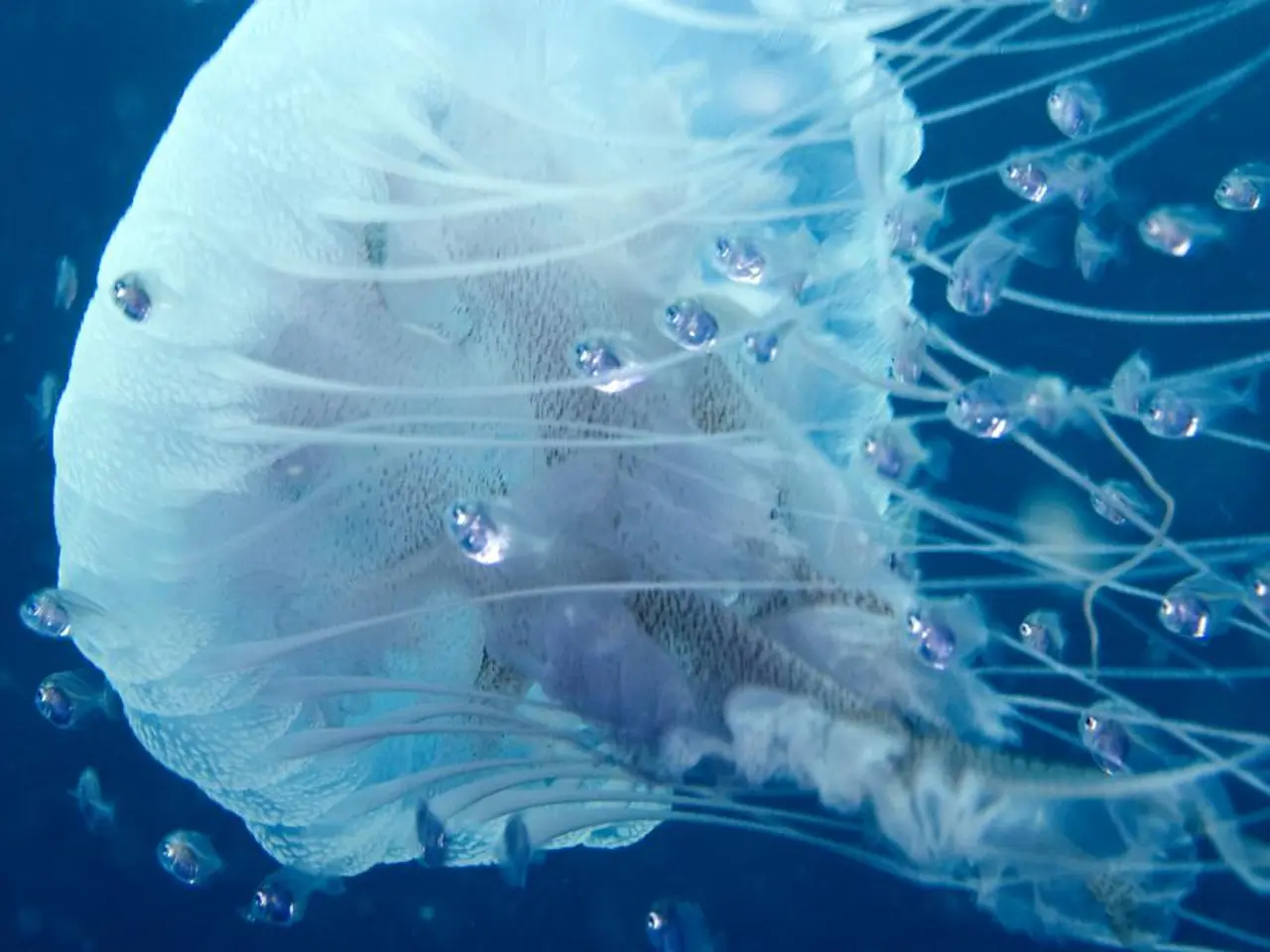Water Skiing Might Have Led to a Hospitalization Due to a 'Brain-Eating' Infection in a Missouri Resident, Officials Suggest
Rare but Deadly Brain Infection Cases Reported in Missouri and South Carolina
A Missouri resident has been hospitalized with a rare and deadly brain infection known as primary amebic meningoencephalitis (PAM), also known as the "brain-eating" amoeba. This news comes just a month after a 12-year-old boy named Jaysen Carr died from contracting PAM in Lake Murray, South Carolina.
PAM is an extremely rare infection in the United States, despite the amoeba, Naegleria fowleri, being commonly found in warm freshwater bodies across the country. Since 1962, there have been only 167 reported cases of PAM, with fewer than 10 cases reported annually in recent years.
Naegleria fowleri thrives in warm freshwater environments such as lakes, rivers, ponds, hot springs, and unchlorinated pools. The amoeba is particularly active during the hot summer months, with temperatures exceeding 77°F (25°C), peaking in risk during July to September. It optimally lives at temperatures above 86°F (30°C) and can tolerate up to 113°F (45°C).
Infection occurs almost exclusively when contaminated water enters the nose, allowing the amoeba to migrate to the brain and cause intense inflammation and tissue destruction. There is no person-to-person transmission, and swallowing contaminated water does not cause infection.
Typical symptoms begin within about 5 days after exposure and include early signs such as headache, fever, nausea, and vomiting. Progressive neurological symptoms like stiff neck, confusion, disorientation, hallucinations, seizures, and coma may follow. Death usually occurs within 1 to 18 days, often averaging 5 days after symptom onset.
Public health advisories emphasize awareness and preventive measures such as keeping the head above water and using nose clips or plugging the nose when swimming or waterskiing in warm freshwater. In light of the recent cases, it is essential to exercise caution during warm water recreation to minimize the risk of exposure to Naegleria fowleri.
| Aspect | Details | |--------------------------------|------------------------------------------------------------------------------------------| | Infection frequency | Extremely rare; ~167 cases in US since 1962; fewer than 10 cases per year recently | | Geographic occurrence | Warm freshwater bodies across United States, especially during hot summer months | | Risk factors | Swimming, diving, waterskiing, nasal exposure to contaminated freshwater or tap water | | Symptoms onset and progression | Symptoms start ~5 days after exposure; progress rapidly; mostly fatal | | Prevention | Avoid water entering nose; use nose clips; be cautious during warm water recreation |
While the Missouri Department of Health and Senior Services has not identified the hospitalized patient, a preliminary investigation suggests that the patient may have been water skiing in the Lake of the Ozarks, a reservoir in central Missouri, days before becoming ill. The Bailey Law Firm, representing the family of Jaysen Carr, has stated that they stand beside the family seeking the truth and ensuring no other family experiences a loss like this.
Stay informed, stay safe, and be mindful of the risks associated with warm water recreation during the summer months. If you experience any symptoms resembling those associated with PAM, seek immediate medical attention.
- The continued occurrence of rare brain infections like PAM underscores the need for ongoing research in medical-conditions and chronic-diseases such as chronic-kidney-disease.
- Engaging in fitness-and-exercise activities like sports such as football can help maintain physical health and wellness, but it's crucial to be aware of the risks associated with sports-related injuries and respiratory-conditions.
- To protect mental-health, it's essential to practice good nutrition, which involves consuming a balanced diet rich in essential nutrients.
- Despite the low incidence of PAM, understanding the environmental factors that contribute to its propagation, especially in lakes, rivers, and warm freshwater bodies, remains crucial for health-and-wellness advocacy and public safety.
- Regular examination of public water sources, including swimming areas, can help ensure proper water treatment and reduce the risk of infection from pathogens like Naegleria fowleri, thus promoting a safer environment for our sports and recreational activities.




